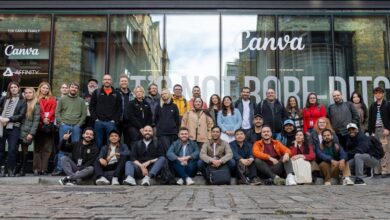Should You Be a Tech-First or People-First Developer?

Should You Be a Tech-First or People-First Developer?
Estimated Reading Time: 7 minutes
- The choice between a deeply technical or people-focused development career is not a binary decision; both paths offer significant growth and impact.
- Deep technical mastery leads to roles like Staff Engineer or Architect, focusing on complex problem-solving and system architecture.
- People leadership roles, such as Engineering Manager, emphasize empowering teams, fostering collaboration, and enabling individual and collective growth.
- Career paths are flexible and dynamic; developers can pivot, blend roles, or transition between technical and leadership focuses throughout their careers.
- Proactive steps like structured self-reflection, initiating growth projects, and open communication with management are crucial for aligning your career with your aspirations.
- The Path of Deep Technical Mastery
- The Journey of Empowering People
- Debunking Myths: It’s Not a Binary Choice
- Navigating Your Growth: Actionable Steps for Self-Discovery
- Final Thoughts
- FAQ
The journey of a software developer is rarely a straight line. From writing your first lines of code to building intricate systems, the landscape of your career evolves constantly. As you gain experience, new opportunities and considerations emerge, prompting reflection on where your unique talents and passions truly lie. One of the most significant junctures many developers face involves a perceived fork in the road: should you deepen your technical expertise or transition into a role focused on guiding people?
This pivotal question often arises in specific contexts. For example:
“At some point in your career, someone will ask you:
“So… are you going to stay technical, or go into leadership?”
And honestly? It can feel like a trap.
You’ve spent years learning to code. You’ve built cool stuff. Maybe mentored a junior or led a feature or two. And now you’re supposed to pick one direction? Like it’s a train you can’t get off?
Here’s what I’ve learned: you don’t have to choose right away. But it’s worth thinking about. Not to lock yourself into a path, but to steer your growth in a direction that fits who you are today.
Let’s explore the fork in the road: technical vs. people leadership and everything in between.”
This reflection isn’t about making an irreversible decision, but rather understanding the different avenues for impact and growth available to you. By understanding these paths, you can proactively shape a career that aligns with your strengths and brings you genuine fulfillment.
The Path of Deep Technical Mastery
For some developers, the allure of the purely technical path is undeniable. These are the individuals who thrive on dissecting complex problems, architecting robust systems, and pushing the boundaries of what technology can achieve. They find immense satisfaction in optimizing performance, crafting elegant design patterns, and being the ultimate resource when a seemingly intractable technical challenge arises. Their passion lies in the craft of coding and the art of system design.
If this description resonates with you, your career might naturally evolve into roles like a Staff Engineer, Principal Developer, or even an Architect. In these positions, you’re not just writing code; you’re elevating the entire technical infrastructure, guiding strategic decisions, and ensuring the long-term health and maintainability of the codebase. Your leadership emerges through your deep expertise and your ability to influence technical direction.
The day-to-day work on this path often involves:
- Immersing yourself in technical strategy and architectural blueprinting.
- Leading insightful code reviews and engaging in high-level design discussions.
- Constantly experimenting with and evaluating new tools and technologies.
- Mentoring junior and mid-level developers primarily through technical guidance and example.
- Acting as a guardian of technical excellence, ensuring quality standards are upheld even under pressure.
This path is a natural fit if you’re deeply invested in the nuances of maintainability, performance, and clean design. If solving intricate technical puzzles energizes you, and you prefer discussing distributed systems over team dynamics, then wielding influence through technical prowess is your form of leadership.
The Journey of Empowering People
Then there are those developers who discover a different, yet equally vital, source of professional satisfaction: empowering their colleagues. This path is less about the code itself and more about the ecosystem in which code is created. It’s about fostering collaboration, providing clarity amidst uncertainty, and building a high-performing, cohesive team. The joy comes not just from solving a problem, but from enabling others to solve problems and achieve their full potential.
As the original author noted, “The first time I really helped someone wasn’t by fixing their bug, but by explaining the concept behind it. That’s when something clicked!”
This revelation often marks the beginning of a shift towards people leadership. Here, leadership is defined by creating an environment where individuals can do their best work, grow professionally, and contribute effectively to collective goals.
Roles on this trajectory typically include Team Lead, Engineering Manager, or even eventually a CTO. Your focus shifts to the human element, the processes, and the strategic alignment that allows technology to flourish.
Key responsibilities and activities on the people path include:
- Facilitating productive team meetings, rituals, and retrospectives.
- Actively mentoring and coaching junior developers, focusing on career growth and skill development.
- Engaging with diverse stakeholders, translating complex requirements into actionable plans for the team.
- Providing constructive feedback, proactively removing obstacles, and ensuring clear communication channels.
- Taking broad ownership of project delivery, ensuring tasks are completed not just by you, but by the team.
This path is ideal if you’re energized by seeing others develop, if you enjoy navigating the intricate interplay of product strategy, development processes, and human dynamics, and if connecting the dots across different domains appeals more than writing every single line of code. For those who choose this, coding doesn’t vanish entirely; it often becomes one of many powerful tools in your managerial toolkit.
Debunking Myths: It’s Not a Binary Choice
One of the most pervasive misconceptions in developer careers is the idea of a rigid, either/or choice between technical and people leadership. Many assume that true “growth” inevitably means managing people, or that once a path is chosen, it’s set in stone. This couldn’t be further from the truth. Careers are long, dynamic, and full of opportunities for evolution and hybridization.
Let’s dismantle these myths:
- “If I want to grow, I have to manage people.” Absolutely not. Roles like Staff, Principal, and Distinguished Engineer offer profound growth, significant compensation, and immense impact, all without direct people management responsibilities. These roles are critical for organizational success, driving innovation and technical excellence.
- “Once I choose a path, I’m stuck.” Definitely not. Developers pivot, blend roles, and evolve their focus throughout their careers. You might start as a deep technical expert, move into management for a few years, and then return to a highly technical individual contributor role with a newfound appreciation for the people aspect. The landscape of your career is highly customizable.
Consider the real-world example of the author’s own journey: “As a junior, the path was clear: Become a medior. Then a senior. But after that? I didn’t know. I liked mentoring. I liked writing docs. I liked owning features. So I started trying things: leading retros, supporting juniors, talking to stakeholders. Over time, I realized: what gave me energy wasn’t just writing code. It was helping others do great work and making the whole system better.”
This personal narrative highlights the iterative process of self-discovery and the organic way a developer’s interests can expand beyond pure code to encompass broader team and system health.
Navigating Your Growth: Actionable Steps for Self-Discovery
Understanding these distinct paths is the first step; the next is to actively engage in self-discovery and strategic action to align your career with your personal and professional aspirations. You don’t need all the answers immediately, but staying curious and proactive is essential.
Actionable Step 1: Engage in Structured Self-Reflection
Take the time to genuinely ask yourself the following questions. Your honest answers will illuminate your underlying motivations and where you derive the most satisfaction:
- What kind of developer do I truly aspire to become? Think beyond titles – what does your ideal day look like?
- When do I feel most “in flow”? Is it during deep dives into complex code architecture, or when you’re facilitating a productive team discussion and seeing breakthroughs?
- Where do I currently bring the most significant value to my team? Is it through your technical problem-solving, or your ability to organize, communicate, and mentor?
- Do I feel energized or drained by mentoring, leading discussions, and resolving interpersonal issues? Pay attention to your energy levels after different types of tasks.
- Is there sufficient room to grow in my current role and company structure? If not, what specific growth opportunities could you propose?
Actionable Step 2: Initiate a Growth-Oriented Project
If growth opportunities aren’t explicitly handed to you, create them. Identify an area you’re passionate about and find a way to apply it that also adds value to your team or company. This could involve deep diving into a new technology or tackling a systemic issue:
- Pick a specific growth theme: Choose something you genuinely want to master – be it advanced testing strategies, frontend performance optimization, developer experience (DX), or accessibility.
- Suggest a value-adding initiative: Frame your learning and application around a tangible business benefit. For instance, “I want to improve our build times by exploring X technology,” or “I’d like to lead an initiative to enhance our team’s onboarding documentation to reduce ramp-up time for new hires.”
- Be visible: Share your findings, demo your experiments, and if appropriate, onboard a junior developer to your new insights. Your initiative and passion will naturally attract attention and new opportunities.
- Use side projects as a lab: If company projects don’t offer the space, explore your growth themes outside of work. Just be mindful to manage your time and avoid burnout.
Actionable Step 3: Proactively Advocate for Your Career Path
Your career is ultimately your responsibility. Don’t wait for your manager to guess your aspirations. Initiate direct conversations:
- Start the conversation with your lead: Express your desires clearly. “I’ve been reflecting on my career trajectory, and I’d love to grow more in [specific technical area or people leadership skill]. Is there room for me to take on responsibilities that align with that here?”
- Request specific opportunities: Ask to shadow someone in a role you’re interested in, lead a specific project, or take on a mentorship role.
- And if nothing changes, consider a move: If your company consistently fails to support your growth despite your proactive efforts, seriously consider seeking an environment that aligns better with your ambitions. You deserve a workplace that invests in your development, not just your output.
Final Thoughts
The choice between being a tech-first or people-first developer isn’t a final destination, but rather an ongoing exploration of your strengths, interests, and impact. You don’t have to have all the answers right now, but you do need to stay honest with yourself about what truly energizes you. The technical path offers incredible depth, while the people path provides immense breadth of influence. Many developers find themselves walking both, or transitioning between them at different stages of their professional lives.
Keep asking yourself:
- What genuinely gives me energy and a sense of accomplishment?
- What kind of impact do I most desire to make in my work and for my team?
Remember, this is your developer path, unique to you. Embrace the journey of discovery, and let your authentic self guide your growth.
I’d love to hear your story. Are you leaning toward tech, people, or still exploring? What helped you decide? What are you struggling with right now? Share your thoughts in the comments below!
FAQ
- Is a tech-first or people-first path better for career growth?
Neither path is inherently “better” for career growth; both offer significant opportunities for advancement and impact. The best path depends on your personal strengths, interests, and what genuinely energizes you. Roles like Staff Engineer (tech-first) and Engineering Manager (people-first) can both lead to senior leadership positions.
- Can I switch between technical and people leadership roles?
Absolutely. Your career is not static. Many developers transition between technical individual contributor roles and people management, or even blend elements of both. Gaining experience in one area can significantly inform and enhance your effectiveness in the other.
- What are some examples of technical leadership roles?
Examples include Staff Engineer, Principal Developer, Architect, Distinguished Engineer, and Fellow. These roles focus on deep technical problem-solving, architectural design, strategic technical direction, and mentoring through expertise rather than direct management.
- What are the key responsibilities of a people-first leader?
Key responsibilities often include team facilitation, mentoring and coaching individual developers, stakeholder engagement, providing constructive feedback, removing obstacles for the team, and ensuring overall project delivery and team well-being.
- How can I determine which path is right for me?
Engage in structured self-reflection by asking what truly energizes you, where you feel most “in flow,” and where you bring the most value. Consider initiating growth-oriented projects in areas you’re curious about, and proactively discuss your aspirations with your manager to explore relevant opportunities.





